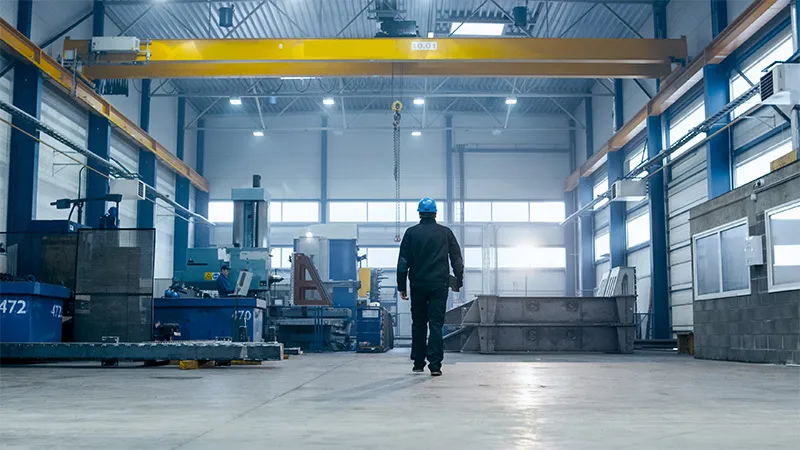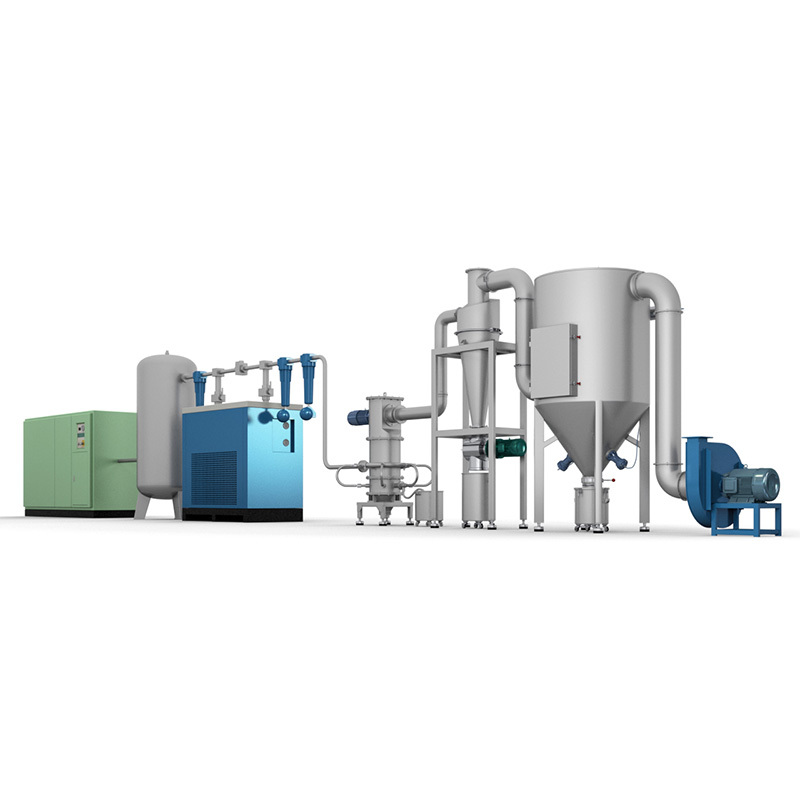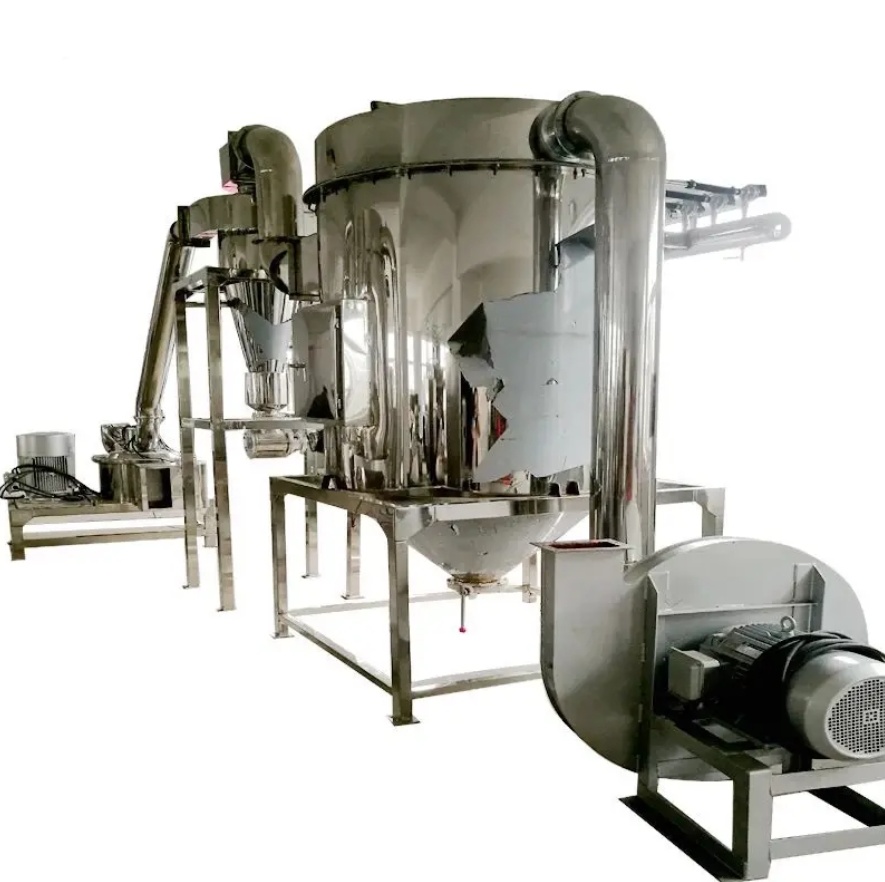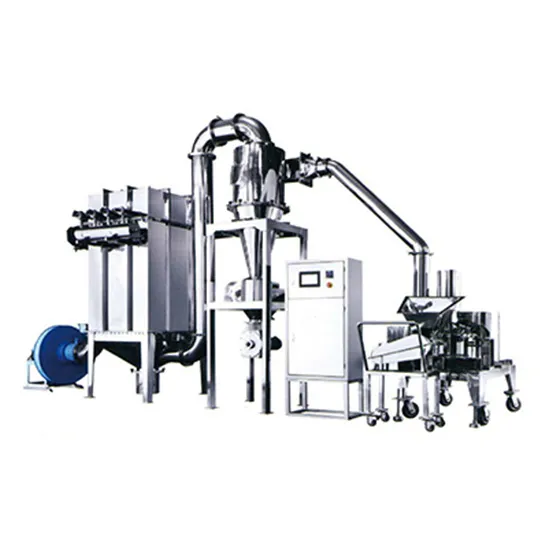NEWS
Understanding the Dynamics of Fluidized Bed Airflow Pulverizers: Enhancing Efficiency in Material Processing
Jul 17,2025
Fluidized bed airflow pulverizers are innovative machines designed to optimize the grinding and pulverizing process of various materials. Unlike traditional milling devices, these systems utilize a fluidized bed of particles suspended in a continuous stream of air. This unique operation allows for enhanced interaction between the particles and the air, leading to efficient and uniform particle size reduction.
One of the primary advantages of fluidized bed airflow pulverizers is their ability to achieve fine and consistent particle sizes. The suspension of particles in the air stream enables a more uniform distribution of forces acting on the particles. This results in a higher degree of energy efficiency during the grinding process, as the system can operate at lower energy inputs while achieving superior results. This is particularly beneficial for industries aiming to reduce energy consumption and operational costs.
Another critical aspect of fluidized bed airflow pulverizers is their versatility. These machines can handle a wide range of materials, including brittle, sticky, and heat-sensitive substances. This adaptability makes them ideal for various applications, from pharmaceuticals to food processing and even chemical manufacturing. The ability to adjust parameters such as airflow rate and particle residence time allows operators to fine-tune the pulverizing process to meet specific material requirements.
Moreover, fluidized bed systems typically produce minimal waste and ensure high material recovery rates. The efficient separation of fine particles from larger ones means that the final product quality is significantly improved. Additionally, these pulverizers often incorporate advanced control systems that monitor and adjust operating conditions in real time, further enhancing efficiency and product consistency.
Safety is another essential consideration in the design and operation of fluidized bed airflow pulverizers. These machines are engineered to prevent dust explosions and other hazards commonly associated with traditional milling processes. The enclosed nature of the system and sophisticated ventilation methods ensure a secure working environment, safeguarding both operators and the surrounding area.
As industries continue to evolve towards more sustainable and efficient operations, the role of fluidized bed airflow pulverizers is becoming increasingly significant. By understanding their operational dynamics and benefits, manufacturers can leverage these advanced systems to enhance their production capabilities and maintain competitive advantages in the market.
In conclusion, fluidized bed airflow pulverizers represent a pivotal advancement in the field of material processing. Their unique operational principles, efficiency, versatility, and safety features make them a preferred choice for a wide array of applications in the manufacturing and processing machinery sector. By integrating such technologies, businesses can optimize their processes and achieve higher performance standards.
One of the primary advantages of fluidized bed airflow pulverizers is their ability to achieve fine and consistent particle sizes. The suspension of particles in the air stream enables a more uniform distribution of forces acting on the particles. This results in a higher degree of energy efficiency during the grinding process, as the system can operate at lower energy inputs while achieving superior results. This is particularly beneficial for industries aiming to reduce energy consumption and operational costs.
Another critical aspect of fluidized bed airflow pulverizers is their versatility. These machines can handle a wide range of materials, including brittle, sticky, and heat-sensitive substances. This adaptability makes them ideal for various applications, from pharmaceuticals to food processing and even chemical manufacturing. The ability to adjust parameters such as airflow rate and particle residence time allows operators to fine-tune the pulverizing process to meet specific material requirements.
Moreover, fluidized bed systems typically produce minimal waste and ensure high material recovery rates. The efficient separation of fine particles from larger ones means that the final product quality is significantly improved. Additionally, these pulverizers often incorporate advanced control systems that monitor and adjust operating conditions in real time, further enhancing efficiency and product consistency.
Safety is another essential consideration in the design and operation of fluidized bed airflow pulverizers. These machines are engineered to prevent dust explosions and other hazards commonly associated with traditional milling processes. The enclosed nature of the system and sophisticated ventilation methods ensure a secure working environment, safeguarding both operators and the surrounding area.
As industries continue to evolve towards more sustainable and efficient operations, the role of fluidized bed airflow pulverizers is becoming increasingly significant. By understanding their operational dynamics and benefits, manufacturers can leverage these advanced systems to enhance their production capabilities and maintain competitive advantages in the market.
In conclusion, fluidized bed airflow pulverizers represent a pivotal advancement in the field of material processing. Their unique operational principles, efficiency, versatility, and safety features make them a preferred choice for a wide array of applications in the manufacturing and processing machinery sector. By integrating such technologies, businesses can optimize their processes and achieve higher performance standards.
More News










